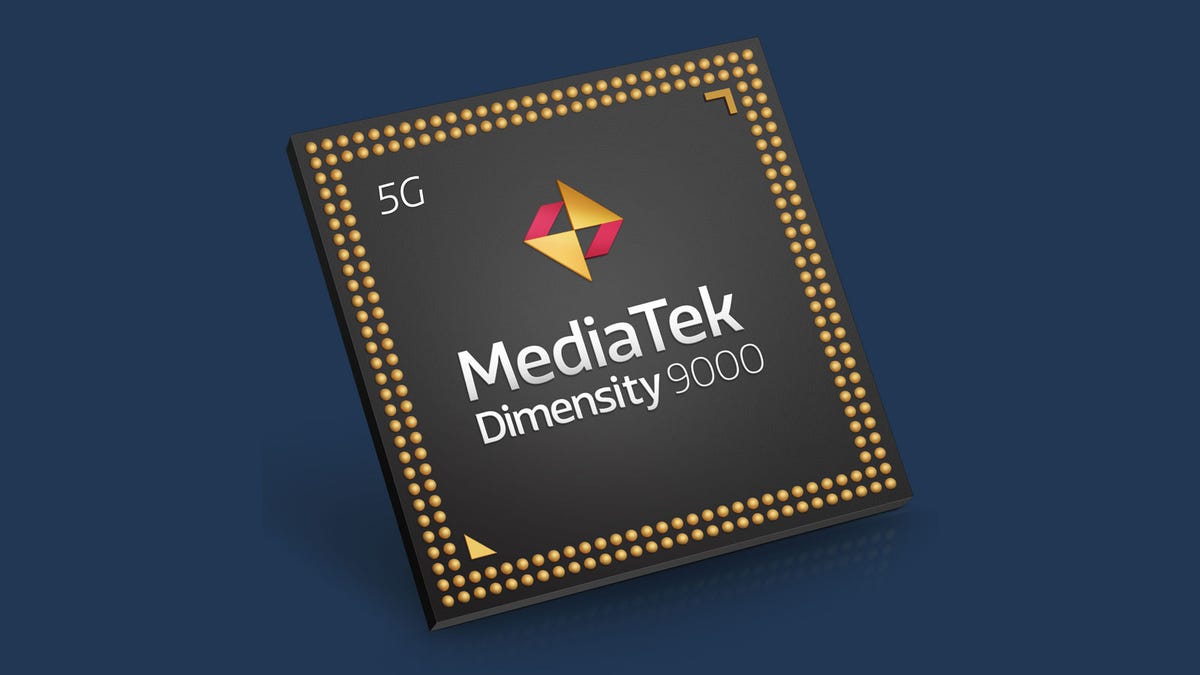Oppo's switch from Snapdragon to Mediatek could signal a phone industry shift
MediaTek is coming for more Android flagships with its new 4-nanometer chip, which supports up to 320-megapixel cameras.

MediaTek Dimensity 9000 chipset is set to power flagship Android phones in 2022.
There's a potential shakeup building in who's supplying the brains of the latest and greatest Android smartphones.
While Qualcomm's Snapdragon processors are the de facto gold standard in high-performance handsets, Taiwanese chipmaker MediaTek said that Chinese phone giant Oppo will be employing its new 5G-capable Dimension 9000 chipset for its flagship Find X-series phones.
The Dimension 9000 is MediaTek's best effort yet to replace Qualcomm's Snapdragon chips in leading Android smartphones, and goes toe to toe with the latter's recently announced Snapdragon 8 Gen 1 silicon. While Chinese handset makers Oppo, Xiaomi, Vivo and Realme have used MediaTek chips in phones sold in China, the next Find X phone is the highest-profile premium phone to switch from Snapdragon to MediaTek. More handset makers embracing MediaTek chips, which tend to be cheaper, could lead to less expensive flagship phones for consumers down the line.
Still, MediaTek has its work cut out for it. Most leading phones from Samsung, OnePlus, Xiaomi and Motorola use Qualcomm's top-tier Snapdragon chips. Now that Google has joined Apple in making its own silicon with its Tensor chips, the landscape could be shifting enough for MediaTek to muscle into Qualcomm's territory.
On paper, the MediaTek chip seems like it will rival the Snapdragon 8 Gen 1. Like Qualcomm, the Dimension 900 employs a chip based on a smaller 4-nanometer structure, a measure of how much more processing power it can pack into a microscopically small space.
That extra horsepower will enable phones to pull off feats like recording 18-bit HDR video from three cameras simultaneously and will support 320-megapixel cameras and Full HD Plus resolution displays with up to 180Hz refresh rates.
Other phone makers have pledged to use the Dimension 9000 in their high-tier phones, including the upcoming Redmi K50. In a statement, Redmi General Manager Lu Weibing described the silicon as "one of the most advanced" in terms of performance, video, gaming, communications or AI capabilities."
Honor and Vivo also confirmed that they're making devices powered by the Dimension 9000, but didn't name the models using it. None of the phones featuring the Dimension 9000 have release dates, but MediaTek said the first devices featuring the chipset will be available in the first quarter of 2022.
It's not clear if these devices will come to the US, which has been a bottleneck for Chinese handset makers. Carriers like Verizon and AT&T don't sell phones from Oppo, Redmi, Honor or Vivo.
But with Motorola including a MediaTek chip in next year's Moto G Power budget phone, we could see more phones switch from Snapdragon in the future.

